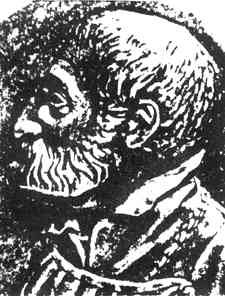
Last Updated on :
Saturday, November 22, 2014
- Information
- Articles Books Booklets
- Commentaries
- Daily Readings
- Hymns/Music
- Study Aids
- Basis of Belief
- Doctrines we reject
- Commandments of Christ
- Christadelphian Instructor
- Sisters
- Read it in a year
- Downloads PDF/Word
- Mobile Files Old Home Page
- _____
Contents|| Preface || 1 || 2 || 3 || 4 || 5 || 6 || 7 || 8 || 9 || 10 || Thanks || INDEX
Brethren In Christ
BY ALAN EYRE
PAGE 26
Eitelhans Langenmantel belonged to one of the oldest, wealthiest and most distinguished families in the south German city of Augsburg, then the largest in central Europe, and his father was its Collector-General and a city councillor. By the time he first met the Brethren in Christ, Eitelhans had been a widower for twenty  years, although during that time he had not been short of female companionship. The thorough conversion of such a prominent citizen early in 1527 was something of a sensation. He was arrested within a week of his baptism, warned and released. Schwab states that he was "from then on one of the fellowship's most active and loyal members''. A very few of his exhortations and writings survive. Typically, they begin "Dearly beloved brethren and sisters in Christ. . ." Only six months later he was arrested again. He was found in possession of and distributing books and tracts dealing with ''the end of the world, the future and the judgement, resurrection, the Kingdom of God, eternal life and hell." This time he was banished from Augsburg, and was hidden and protected in a nearby village by -- somewhat surprizingly -- a brother of Archbishop Lang of Salzburg, the arch heresy-hunter of Austria!
years, although during that time he had not been short of female companionship. The thorough conversion of such a prominent citizen early in 1527 was something of a sensation. He was arrested within a week of his baptism, warned and released. Schwab states that he was "from then on one of the fellowship's most active and loyal members''. A very few of his exhortations and writings survive. Typically, they begin "Dearly beloved brethren and sisters in Christ. . ." Only six months later he was arrested again. He was found in possession of and distributing books and tracts dealing with ''the end of the world, the future and the judgement, resurrection, the Kingdom of God, eternal life and hell." This time he was banished from Augsburg, and was hidden and protected in a nearby village by -- somewhat surprizingly -- a brother of Archbishop Lang of Salzburg, the arch heresy-hunter of Austria!
He and six other members were finally tracked down by a police squad in another village and taken to Weissenhom castle for interrogation and torture. Some records of the hearing
PAGE 27
are extant. Langenmantel denied that the Brethren had any secret codes or passwords; their salutation was "God greet you, brother in the Lord". All seven were executed, including Langenmantel's faithful servant's wife who claimed that she had never even been to a meeting and had certainly not been baptized. Langenmantel suffered from gout, an affliction that police torture would not relieve. So he had to be carried to execution and was beheaded as he sat in a chair.
Obtaining the portrait of Langenmantel proved to be a more difficult task than expected. The drawing was made by the famous German artist Albrecht Durer, but exhaustive search into every collection of his works listed no Langenmantel. The staffs of both the Stadtsarchiv and the Stadtbibliothek in Augsburg at first failed to trace it. Finally, a sharp-eyed librarian at the latter found that Durer had taken the portrait back home with him to Nuremberg in the early 1500's, and so traced the original.
All Books/Booklets, Editorials, and Articles are FREE and can be downloaded without permission.